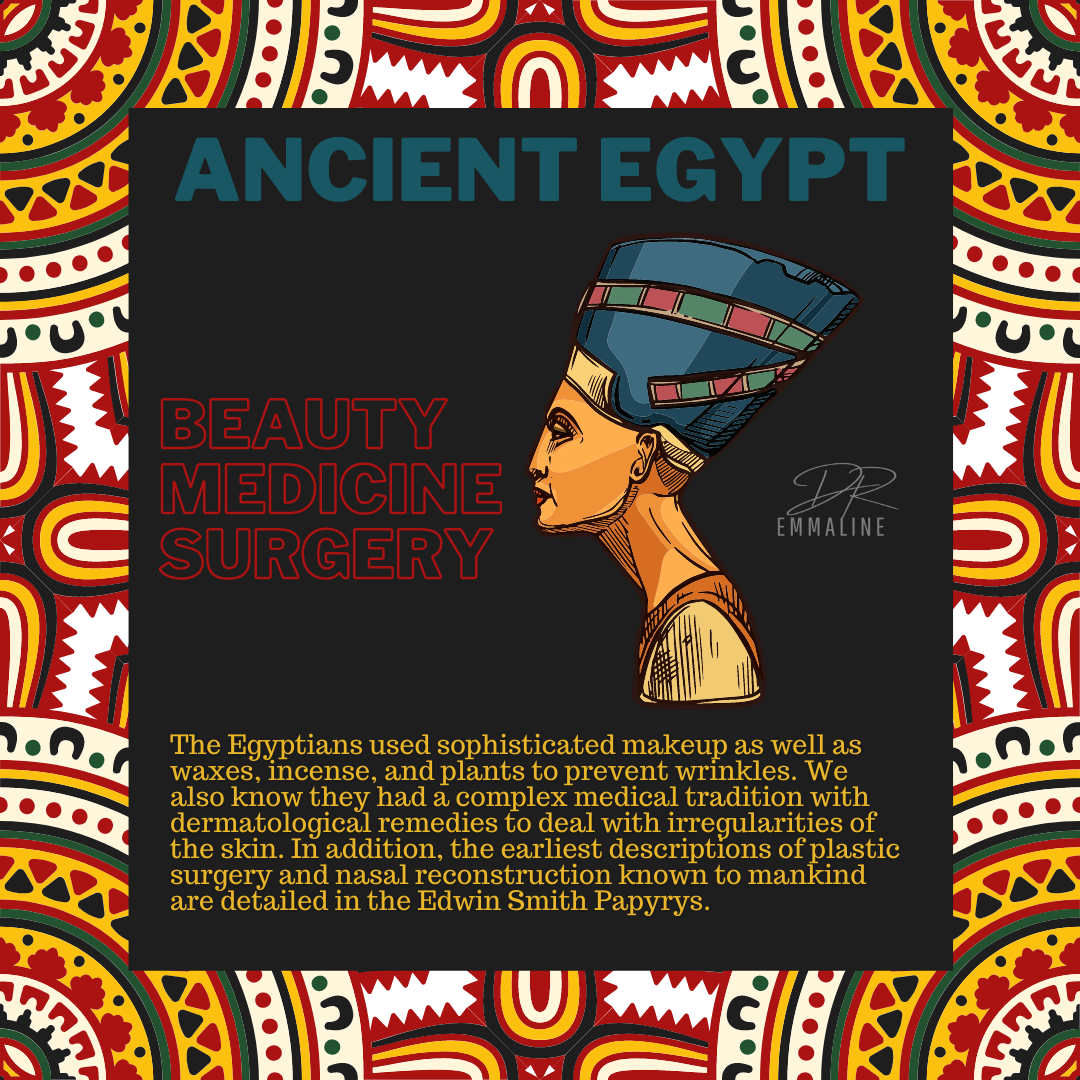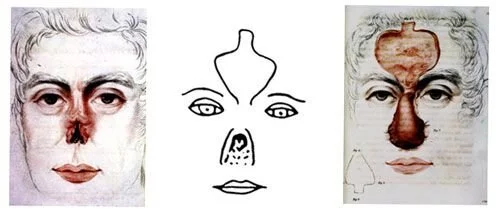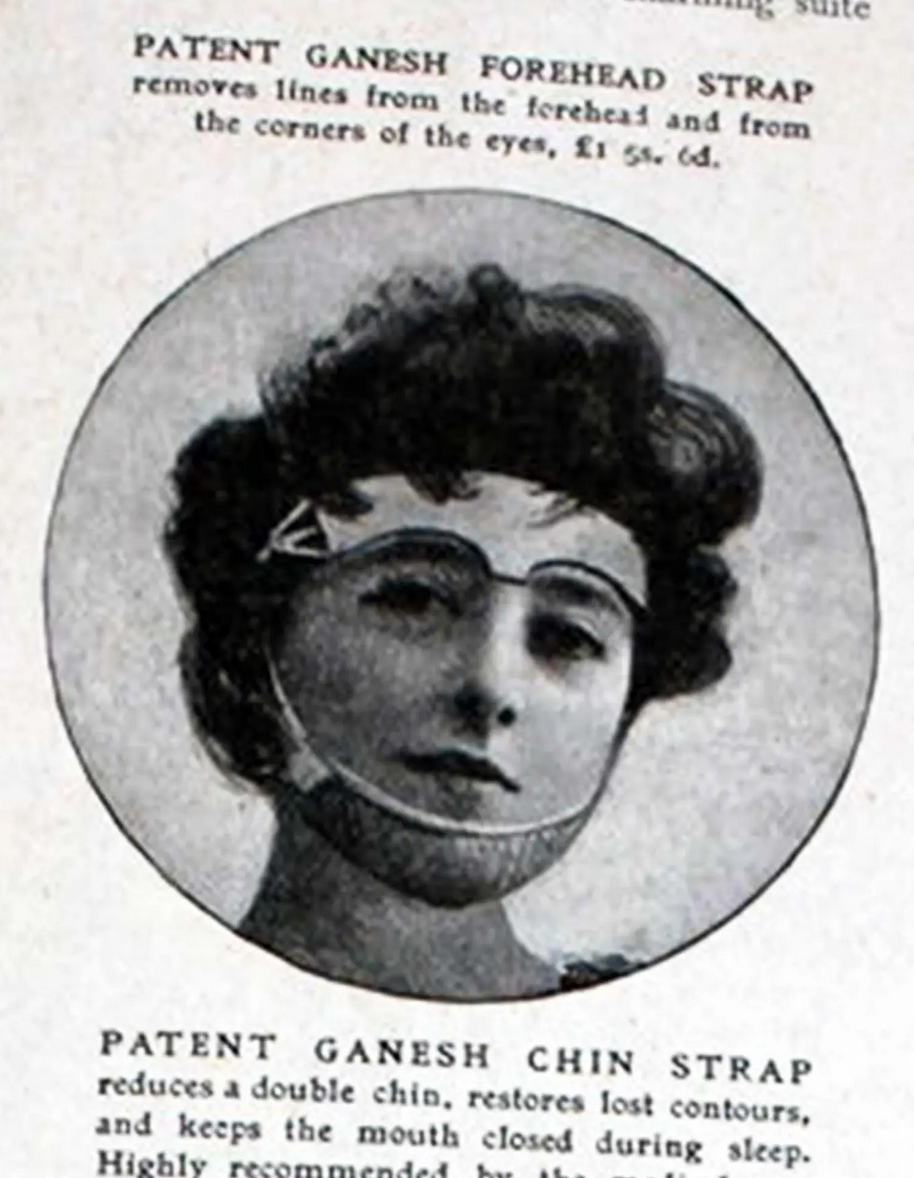The Beautiful History of Aesthetic Medicine
The desire to improve our appearance and to pursue a certain ideal of beauty has existed for as long as human history has been recorded. As I’ve written before, the history of aesthetic medicine is firmly ensconced in the history of plastic surgery, so you will find traces of that throughout this article.
Join us for a wonderful, whirlwind tour through the history of aesthetic medicine - from the ancient world to the modern day.
The Ancient World
The origins of these desires can be traced all the way back to Ancient Egypt. The Egyptians would alter their appearance with makeup and use various waxes and incenses to prevent wrinkles. They also had a detailed and sophisticated medical tradition where they used dermatological remedies to deal with various irregularities of the skin.
Ancient Egypt is also where you will find the first documented records of nasal reconstruction in the mysterious Edwin Smith Papyrus. The papyrus also explained the management of facial fractures and gaping facial wounds, as well as basic techniques in trauma and trauma surgery.
The Susrata Samhita, 800 BCE
Other areas of the ancient world where aspects of plastic surgery or aesthetic medicine appeared includes India. There, in around 800 BCE, the famous Sanskrit work “Sushruta Samhita” was written. It is the first surgical textbook that emphasies a clear understanding of anatomy as necessary for practice, as well as containing descriptions of skin grafts and flaps, and reconstruction techniques of the nose and cheeks.
The technique for using a flap to reconstruct the nose was famously re-published from the “Sushruta Samhita” in “The Gentleman’s Magazine of Calcutta” in 1794, and became the earliest and most widely used methods of nasal reconstruction.
The Gentleman's Magazine of Calcutta
The 19th Century
However, the use of science and medicine to begin attempting to alter appearance really began taking off in the 19th century. We see the field of aesthetic medicine in its infancy, with various techniques and substances being trialed for use in patients. We have touched upon some of these early stories and famous cases in our article on infamous filler complications: Botched!
The first chemical peel was performed with phenol by English dermatologist Dr William Tilbury Fox in 1871. These peels were then refined by Dr Paul Gerson Unna, a German pioneer of dermatopathology, who described the salicylic acid, resorcinol, phenol, and trichloroacetic acid (TCA) peels.
The first rudimentary fillers, which were composed of paraffin and caused granulomas to form in the body, were trialed by Austrian surgeon Dr Robert Gersuny in 1899. German physician Dr Franz Neuber used autologous fat in 1893 as a filler, being the first doctor to ever take fat from one part of the body to place into areas of the face. Finally, the first breast transplant surgery was done using a lipoma (a benign fatty tumour) taken from a patient’s back and transplanted to her breast by Dr Vincent Czerny, a German surgeon.
The Early 20th Century
Starting in the 1900s, there was a sudden proliferation of charlatans and quacks who saw the opportunity to engage in the field of aesthetic medicine. Sadly, at this time they were more prevalent in practice than medical professionals. We cover this time period in more detail here.
Strange devices were often advertised in newspapers and magazines to allow ladies to mold or shape their chins or to smooth wrinkles from around their eyes. There were also various belts and reducers marketed to give women slimmer figures. Needless to say, the results from these devices were not very good!
Dr Charles Conrad Miller of Chicago was a talented writer and extremely interested in aesthetic medicine and cosmetic surgery. A brilliant and somewhat egotistical man, he graduated from the Hospital College of Medicine in Kentucky in 1902. While, as his career progressed, he did not always behave as ethically as one would have wished, reading some of his early work and criticisms of the field at that time has some striking parallels to today. He was particularly annoyed at the unethical advertising to patients from many of these quacks:
“…This class of work…is a special field worth of the closest study of the ablest of our profession, for he who operates or treats these cases has the future happiness and peace of mind of the patient at stake. Operations for improving the appearance cannot be botched. The operator must be skillful and fully capable in this field more than in any other.
The criminal carelessness of advertisers is unbelievable to those who have not seen the results of their utter disregard for patients. Many patients have consulted me who have been mutilated by advertisers and I have yet to find one who, before submitting to the advertiser for treatment, had not consulted a regular physician in good standing.”
Another well-known early pioneer in the field was Dr Frederick Strange Kolle, a German-American who practiced in New York City. He famously published one of the earliest books on cosmetic treatments. These early years contain fascinating stories of cosmetic surgeons, too many in number to fully discuss here.
The correction of protruding ears from Plastic and Cosmetic Surgery by Kolle, 1911.
The World Wars
What really led to an explosion in innovation and development of plastic surgery were the two world wars in the early 20th century. These wars resulted in horrific injuries, the likes of which had never been seen before. Soldiers returned with trauma to their faces and limbs, and doctors were motivated to do what they could for them.
Sir Harold Delf Gillies was one of the giants in this field. He worked in France as a general surgeon in the first World War, and became very interested in helping soldiers who had suffered terrible facial injury. He formed one of the first specialist plastic surgery units to deal with these patients. During the second World War, he was appointed a consultant to the ministry of health to expand the plastic surgery service around the country.
The Mid-to-Late 20th Century
By the mid-20th century, aesthetic treatments began focusing on making more and more improvements to cosmetic appearances via non-surgical means.
However, there were some setbacks. Dr Thomas D Rees, a famous New York plastic surgeon, published a paper in 1965 looking at the use of the inert substance of silicone as an injectable. It had a natural feel and lasted a long time. However, over the years it would migrate and cause fistulas. The problems were made infamous with the use of silicone injections in the Las Vegas showgirls, which led to terrible complications. Other substances, including bovine collagen were used, but could cause sensitivity reactions and often had very short-lived effects.
In the 1950s we also had the first case of modern hair transplantation documented in western medicine, although a Japanese physician had performed successful punch transplantation several decades earlier. The technique published by New York dermatologist Dr Norman Orentrich was the basis for modern hair transplantation for many decades afterwards.
The first use of lasers in dermatology was in the 1960s, when Dr Leon Goldman published a famous article about tattoo removal with a ruby laser. However, it was a difficult procedure to get right, with scarring and pigmentation occurring, and lasers were set aside in aesthetic medicine for a great many years.
The most famous innovation in aesthetic medicine has to be, of course, the use of botulinum toxin for cosmetic purposes. It had actually been in use in medicine since the 1970s, for a variety of medical conditions including blepharospasm (involuntary blinking of the eye), strabsimus (a misalignment of the eyes), torticullis, migraines, and overactive bladder. Botox is also used for the treatment of severe excessive sweating (also known as hyperhidrosis).
The breakthrough occurred in the early 90s, when an ophthalmologist and dermatologist wrote a paper describing that botulinum toxin had a desirable cosmetic side effect of smoothing out dynamic wrinkles. As described above, botulinum toxin had been used to treat various eye disorders for several decades, but clinicians were suddenly finding that their patients were returning to them because they were absolutely loving the side effects!
It was 2002 that the FDA approved the use of botulinum toxin for cosmetic use for the glabellar area (your frown lines or “elevenses”). In 2013, the FDA also approved its use for the lateral canthus (crow’s feet). Of note, other uses of botulinum toxin in the face at off-license, meaning that it is up to the medical professional’s discretion and expertise to prescribe.
The 21st Century
In the modern world, the body has been described as both the primary symbol of identity and something that it has become socially acceptable to alter to a person’s whim without limitations. A glance as television or social media will highlight that ours is a culture of youth and beauty. Initially reserved for the rich and famous, the accessibility and visibility of these treatments have catapulted them to the forefront of our society.
Aesthetic medicine had now expanded to include a huge range of sophisticated treatment options for both the face and beyond, far beyond just injectables. It is an exciting time for the field, which is constantly innovating.
References
França K, Kumar A, Fioranelli M, Lotti T, Tirant M, Roccia MG. The history of Botulinum toxin: from poison to beauty. Wien Med Wochenschr. 2017 Oct;167(Suppl 1):46-48. doi: 10.1007/s10354-017-0553-7. Epub 2017 Mar 15. PMID: 28299552.
Hartmann A. Back to the roots - dermatology in ancient Egyptian medicine. J Dtsch Dermatol Ges. 2016 Apr;14(4):389-96. English, German. doi: 10.1111/ddg.12947. PMID: 27027749.
Krueger N, Luebberding S, Sattler G, Hanke CW, Alexiades-Armenakas M, Sadick N. The history of aesthetic medicine and surgery. J Drugs Dermatol. 2013 Jul 1;12(7):737-42. PMID: 23884484.
Rogers, BO. A Chronological History of Cosmetic Surgery. Presented at a meeting of the Section on Historical Medicine, Sept 24, 1969.























In 1933, a shocking exhibit toured America, displaying products that had blinded women, caused permanent hair loss, and even killed unsuspecting consumers. The "American Chamber of Horrors," as it came to be known, featured genuinely toxic cosmetic products, that contrast sharply with how remarkably safe modern products actually are.
Yet somehow, in our era cosmetic safety and regulation, we've developed an irrational fear of "chemicals" and "toxins" in beauty products. The irony is striking: we've never been safer from cosmetic harm, yet we've never been more frightened of our makeup bags.
Let's explore how the real horrors of unregulated cosmetics led to the robust safety framework we have today - and why most modern "clean beauty" fears fundamentally misunderstand how cosmetic regulation actually works.